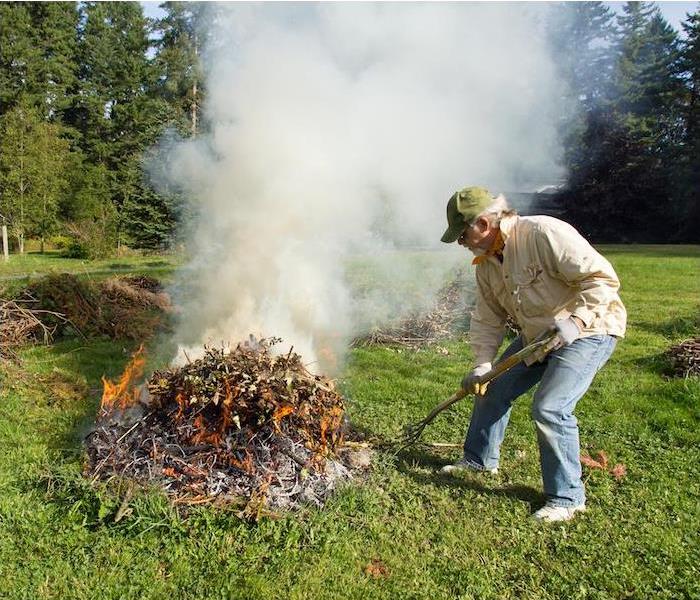How to Get Permits and Safely Burn Leaves in Georgia
9/21/2021 (Permalink)
 If fire should damage your property, SERVPRO of Troup-Coweta is here to help. Contact us to learn more.
If fire should damage your property, SERVPRO of Troup-Coweta is here to help. Contact us to learn more.
It’s the time of year where you’re likely accumulating a yard full of brown and red leaves as they fall from the trees in their annual cycle. So what’s to be done with them after the kids have piled them up and run through them?
Many homeowners choose to gather leaves and yard trimmings and burn them, because it’s efficient, natural and doesn’t incur the cost associated with removal services.
Anytime there’s an open flame, however, there’s a risk of fire danger—in fact, the burning of debris is the top cause of wildfires in Georgia, causing more than half of the state’s annual fires.
Let’s talk about how to safely and legally burn those leaves and lawn trimmings.
To everything there is a season, and the season for leaf burning begins Oct. 1. From October through the end of April, it’s legal in Georgia for you to get rid of leaves, fallen branches and other trimmings by burning. Summertime burns are not allowed due to considerations regarding air quality.
Even in burning seasons, you need a permit. This part is required, but simple enough. Contact the Georgia Forestry Commission to obtain a permit before you burn your leaves.
Note that there may be particular rules about what you can and can’t burn (such as household garbage) that apply not only to the county in which you live, but particular cities and townships as well. You may also want to notify the local fire department before you burn.
Choose a safe place 50 feet from any structures, and not underneath low tree limbs or power lines. Use a burn barrel if you have one, or choose a dirt area. Have a water hose ready and use it to soak the ground around the fire, and use a metal rake to manage the edges of your leaf pile.
Burn in small piles. You might have to do more burns this way, but it’s much safer than setting a big pile ablaze and having it get out of hand.
Don’t burn on windy days, as leaves and embers are prone to being caught up and carried off in ways you can’t control. Keep your unburnt leaves upwind from your burning pile to prevent them from catching fire due to traveling embers. And make sure there’s plenty of space between the two piles so your fire doesn’t get frisky and spread.
Knowing when and how to burn yard waste is crucial in preventing wildfires and backyard blazes that could threaten your home. Follow these guidelines to keep yourself in the clear.
If fire should damage your home or property, SERVPRO is here to help. Contact us to see how we can recover and restore damaged homes and businesses.




 24/7 Emergency Service
24/7 Emergency Service